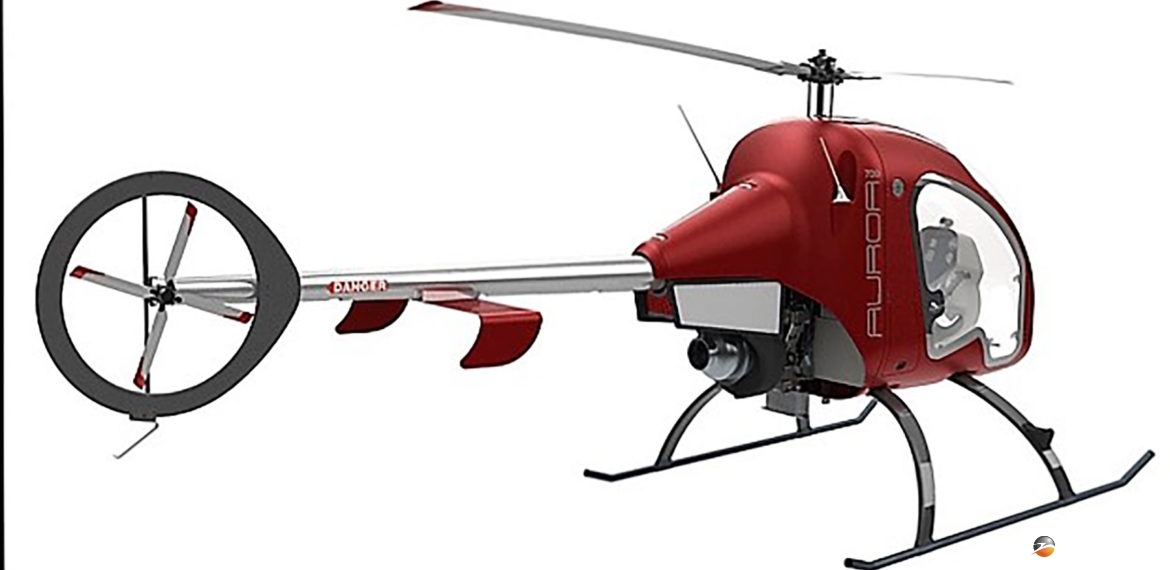Photograph:
An artist’s impression of the Auroa 700 (Auroa Helicopters)
Country of origin:
New Zealand
Description:
Two-seat light sport helicopter
Power Plant:
One 119 kw (160 hp) Solar T-62 Titan gas turbine
Specifications:
- Never exceed speed: 167 km/h (104 mph)
- Cruising speed: 148 km/h (92 mph)
- Rate of climb: 366 m/min (1,200 ft/min)
- Endurance: 2 hours
- Hovering ceiling out of ground effect: 1,829 m (6,000 ft)
- Hovering ceiling in ground effect: 2,134 m (7,000 ft)
- Fuel Jet: A1
- Empty weight: 310 kg (683 lb)
- Loaded weight in microlight class: 544 kg (1,199 lb)
- Loaded weight in design max: 600 kg (1,323 lb)
History:
At Te Kowhai, New Zealand in October 2011, at an event described as New Zealand’s “first air innovation show”, Auroa Helicopters Ltd (New Zealand) Industry Manufacturing of South Taranaki announced it was developing a new two-seat helicopter powered by a 119 kw (160 hp) Solar T-62 Titan turbine engine. The Company was owned and directed by Richard Sybrandy, who was also the director of design and engineering.
This machine, developed in New Zealand, was fitted with a carbon fibre body and airframe, and was said to have a number of new features relating to safety, quality and performance. It was a two-seat machine with a turbine powerplant of carbon fibre construction with a high visibility polycarbonate windscreen and doors. It had a switchable engine control system, electronic and manual override and full FADEC function with data download. All hard points and mounting fixtures had been designed to FAR 27 standard. It had four-point safety harnesses, transceiver / transponder and ELT as standard. Dual controls were fitted but the second set could be removed. There were two storage compartments.
The machine could be obtained as a fully built up helicopter and could be registered in the New Zealand Microlight Category where a small amount of maintenance could be performed by the owner but annual inspections needed to be performed by a New Zealand Civil Aviation Authority approved Licensed Maintenance Engineer.
The engine was a variant of the Solar T-62 Titan series which was developed in the United States as an APU (Auxiliary Power Unit) ground generator or helicopter power plant, being used in this role in early models of the Boeing CH-47 Chinook, the Boeing Vertol Sea Knight, Sikorsky SH-3, Sikorsky CH-54A Skycrane, Lockheed Jetstar and Dassault Falcon. It could be obtained in power ranges from 63 kw (85 hp) up to 119 kw (160 hp).
The prototype was reported as initially test flown. By 2012 three prototypes had been built and had completed 150 hours of testing. The first prototype was then grounded pending the installation of a new engine control system, this work commencing in April 2012.
The machine was a fully assembled two-seat turbine-powered helicopter, the Company providing training in maintenance and handling as part of the purchase program. It was described as “the world’s roomiest two-seat helicopter, with the largest payload and the longest endurance”.
At the 2012 Experimental Aircraft Association (EAA) event at Oshkosh in Wisconsin, USA an example of the Aurora 700 machine was placed on display.

